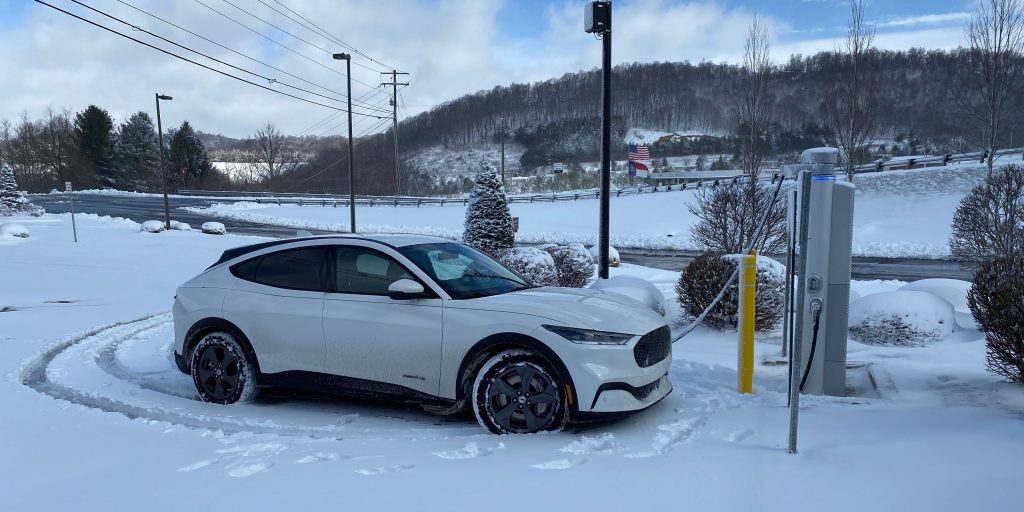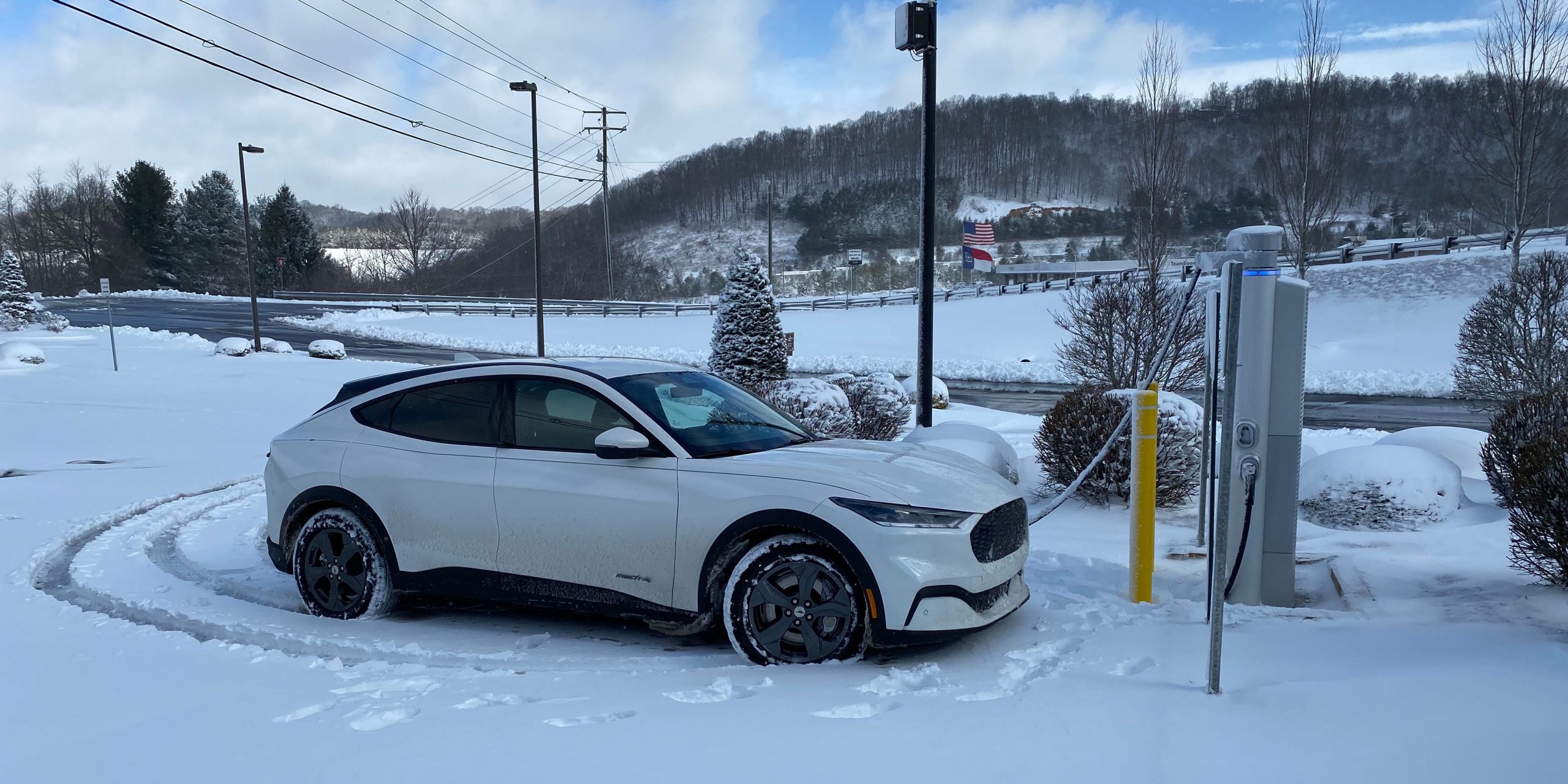
- This winter, I drove a Ford Mustang Mach-E on a roughly 200-mile drive up a cold and snowy mountain.
- I drove a 2021 Mach-E Select AWD, which costs $47,290 with destination fees. It has a range of 211 miles.
- After the trip, I'd say EVs perform better in the winter than any gas-powered vehicle I've driven.
Electric cars and rural snowy mountain passageways seem like a treacherous concoction to most. This stems from their new and unfamiliar nature: The possibility of getting stranded in a car that might not be able to handle the elements would scare most rational people away.
But there's no need to fear. After taking a 2021 Ford Mustang Mach-E up a snowy winter mountain, I'd say that electric cars perform far better in the winter than any gas-powered vehicle I've driven.
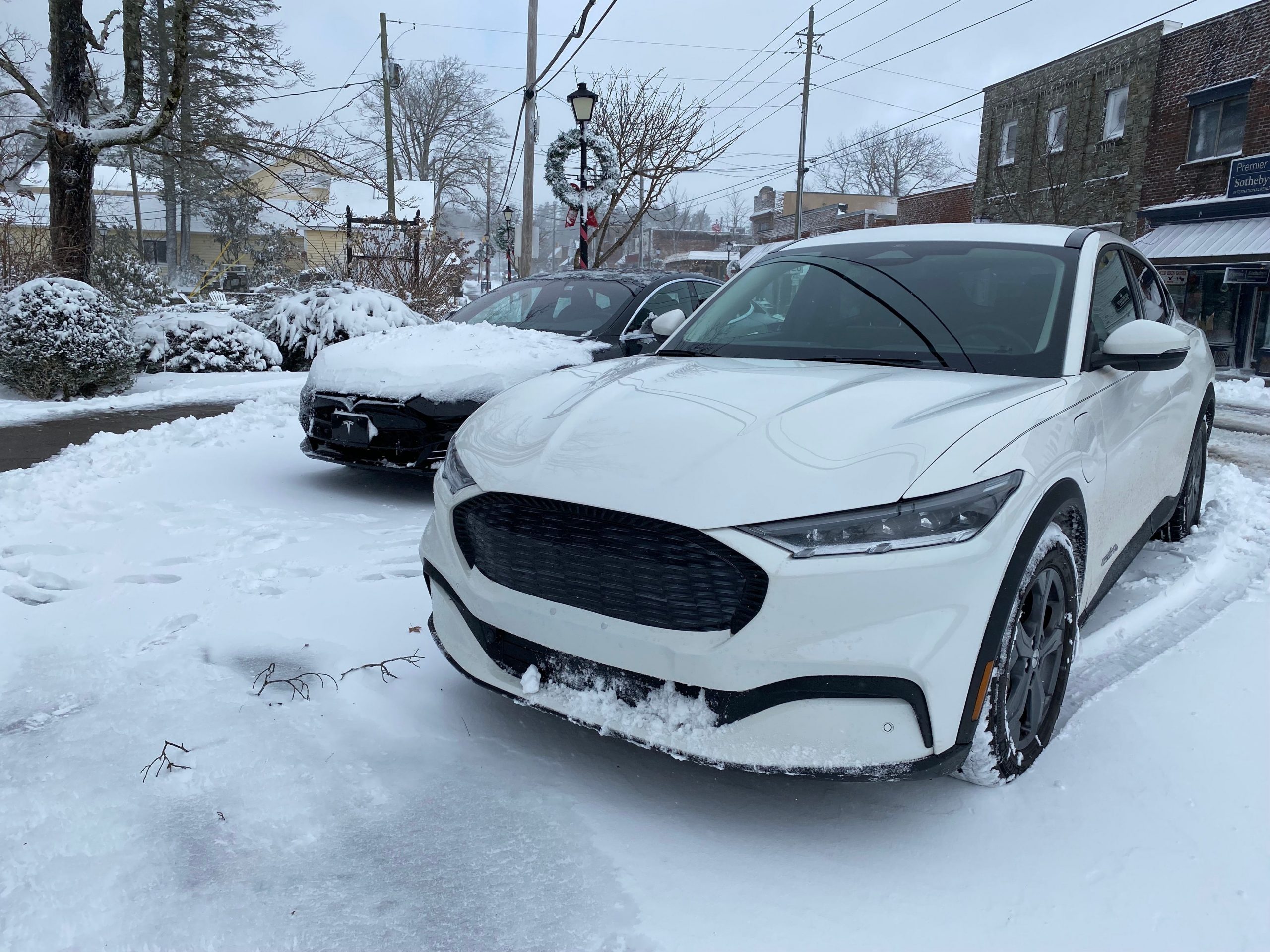
This winter, I drove a Mach-E on a road trip up to the mountains of North Carolina. The SUV came in the entry-level "Select" trim with the standard 68-kWh usable battery pack, and it included the optional $2,700 dual-motor upgrade. This setup amounts to 266 horsepower, 428 pound-feet of torque, and an EPA-estimated driving range of 211 miles. This one costs $47,290, but it still lacks heated seats, which should be standard on something of this price tag.
I did a predominantly highway drive from Charlotte, North Carolina, to an in-state mountain town called Boone. If you're unfamiliar with the area, Boone is home to Appalachian State University and about 90 miles away from Charlotte. I was looking at around 180 miles of winter conditions, steep grades, and highway driving: all of which are touchy subjects with electric cars.
I left Charlotte at about 9:30 a.m., and the conditions were less than lovely; it was 39 degrees Fahrenheit and raining. Soon enough, the rain transitioned into a wintry mix.
Once I hit the 50-mile mark, the vehicle recorded an efficiency rating of 2.7 miles per kilowatt-hour. That figure would yield a total range of 184 miles, or nearly 30 miles lower than the EPA-estimated figure.
This decline in range is caused by the cold conditions and higher driving speeds on the highways. Since EVs don't have a traditional gearbox, the faster you go, the higher its revs become, thus utilizing more energy.
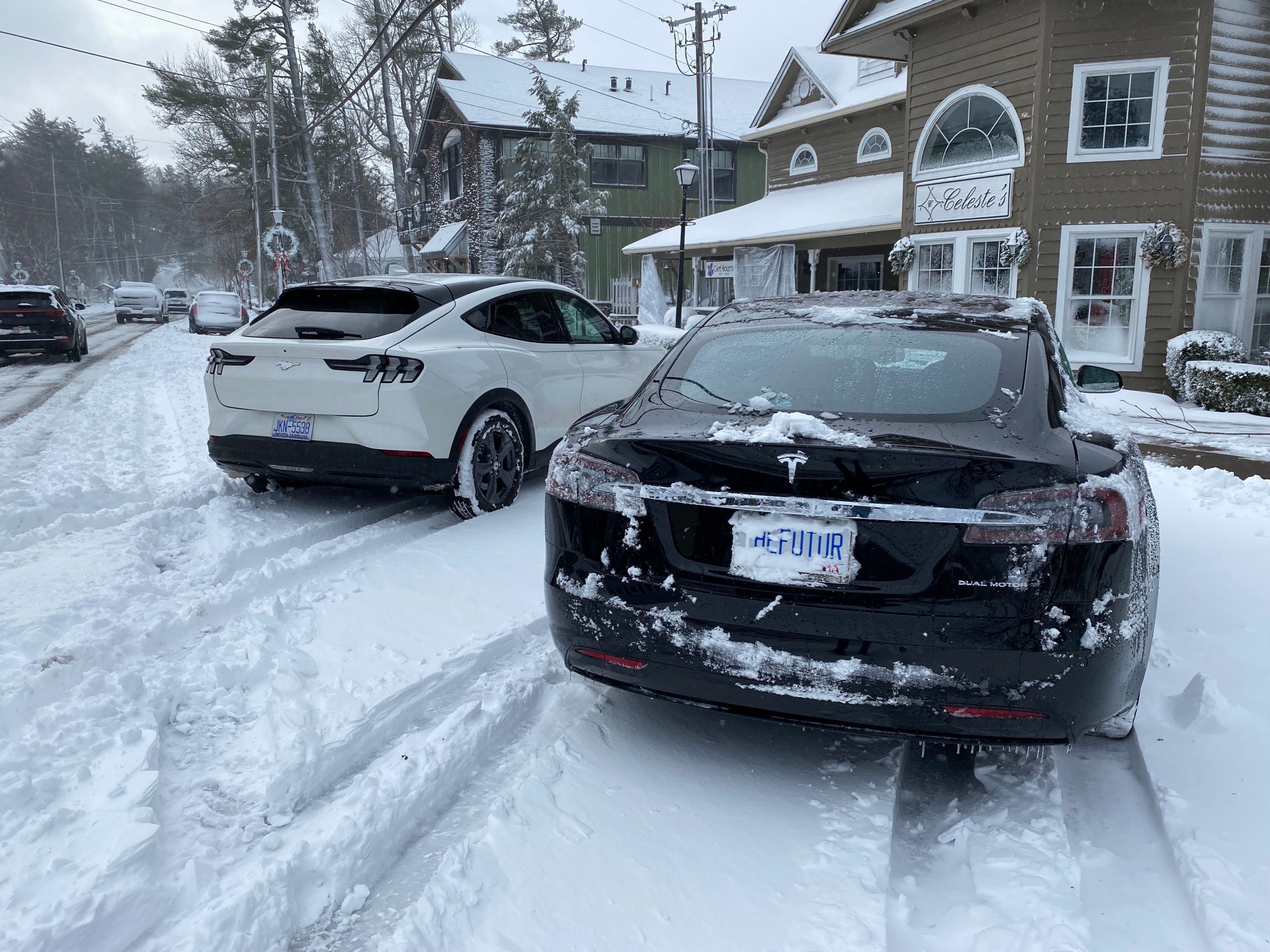
After reaching Lenior, North Carolina, the slope up the mountain increased, and the temperature plummeted. After just 20 minutes of driving out of Lenoir, the temperature dropped by about 15 degrees Fahrenheit and the elevation increased by nearly 2,500 feet.
The Mach-E performed very well up the mountain and still had plenty of passing power. Soon we reached Blowing Rock, a small mountain town you need to pass through to get to Boone.
Once I hit Blowing Rock, the conditions immediately turned south. Several inches of snow and frozen slush coated the road, and the wind became quite intense.
Yet the Mach-E's dual-motor system allowed it to glide across the wintry environment effortlessly, and instances of tire slippage were far and few. Since electric cars have maximum torque from 0 rpm, the computer can instantly monitor and distribute power to each motor. This is a disadvantage that internal combustion-only vehicles have compared to EVs and hybrids: their engines and gearboxes just can't react fast enough.
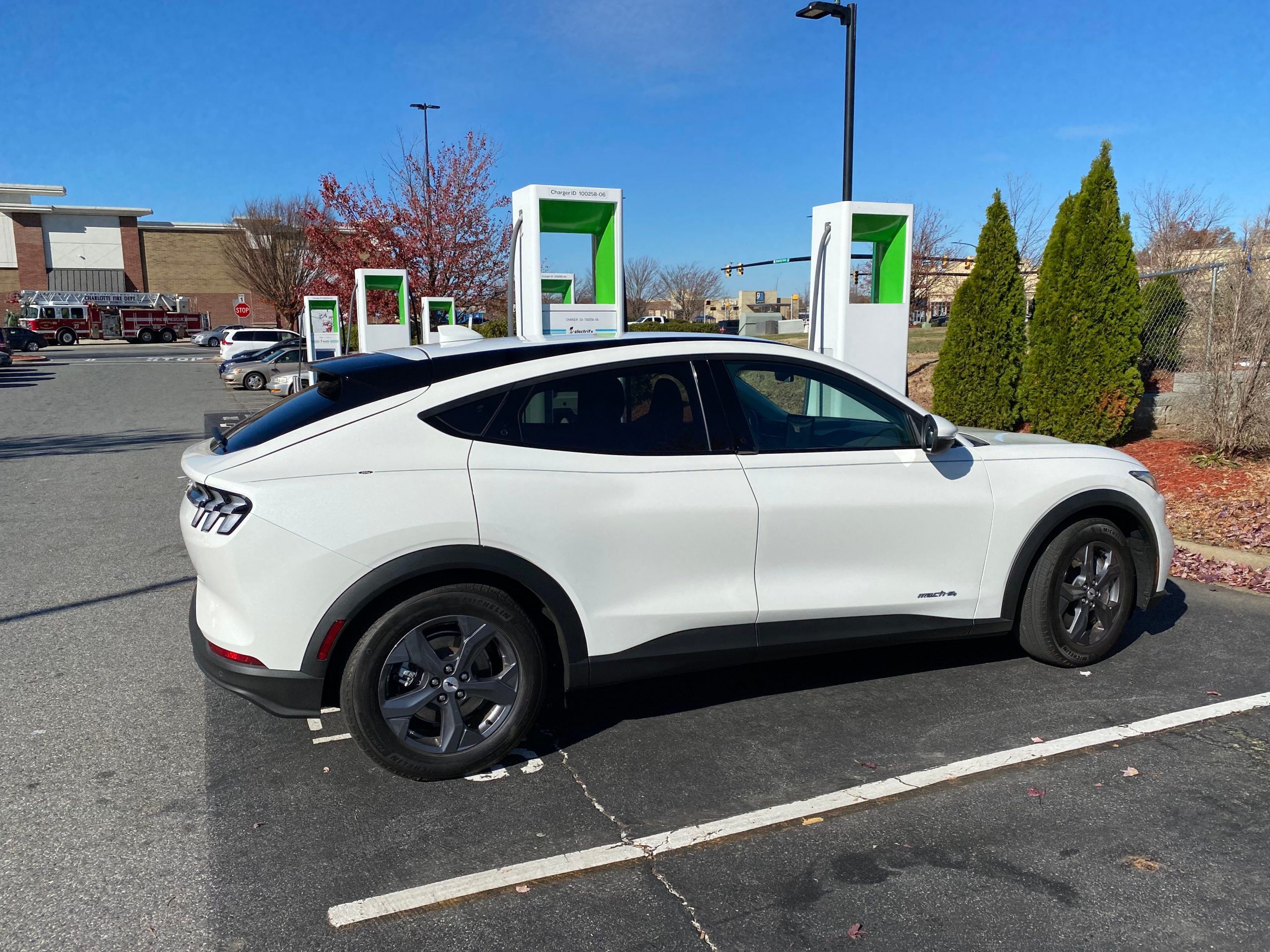
After Blowing Rock came a short drive to Boone, and there was a DC Fast Charger right outside of town. After reaching the station, the car indicated 48% battery left. So, I used 52% battery, or 35.4 kWh of energy, to get from Charlotte to Boone.
Since the drive down the mountain boosted my battery through a process called "regenerative braking," it would've been very likely for me to make it back home on a single charge. But since I wanted to spend more time in the mountains and the charging station was empty, I figured I might as well plug it in for a bit.
In the EV world, it's important to note that just because you're using a fast charger, it doesn't mean that the station can supply your vehicle's maximum charge rate. The standard-range Mach-E has a maximum charge rate of 115 kW, and the charging station I used was only capable of 62.5 kW (think of charging your iPhone with the standard adapter versus an iPad or fast-charging brick).
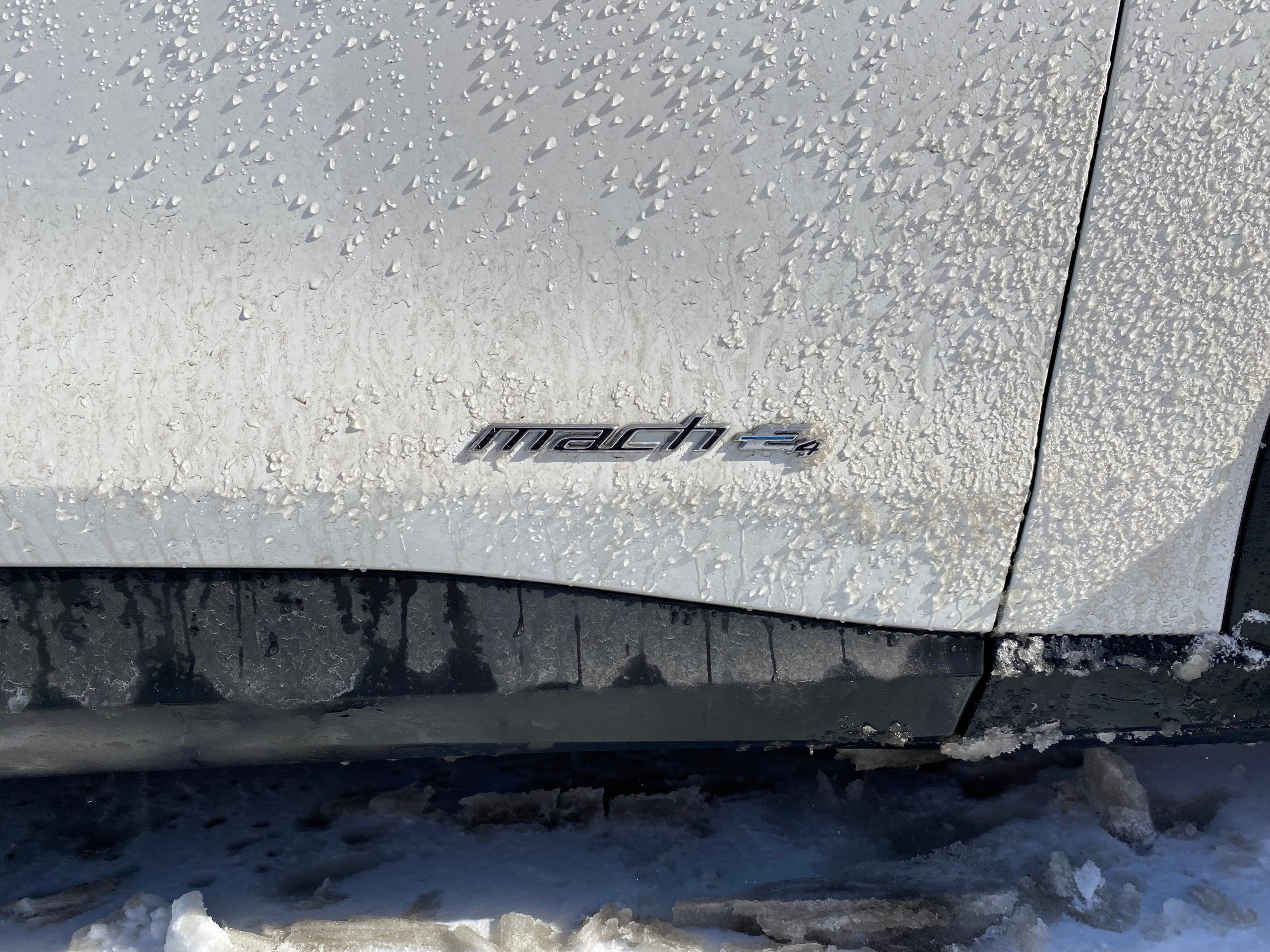
Regardless, the Mach-E still charged in a relatively short amount of time. In just 32 minutes, the battery reached 80% and added 24 kWh of energy. The best part was that it only cost $2.71 for the charge ($5 per hour).
On the drive up, my final efficiency average was 2.5 miles per kWh, so according to this figure, I could travel 60 miles for less than three dollars — not bad at all. In better conditions, that figure would only increase.
After the charge, it was time to put the Mach-E's dual-motor drivetrain to the test. While it could manage its traction quite well in the snow in its standard "Engage Mode," the Mach-E became incredibly playful in its sportiest setting, "Unbridled Mode." If you firmly pressed the accelerator around corners, the rear would quickly — yet controllably — slide out. Overall, it performed flawlessly in the winter conditions.
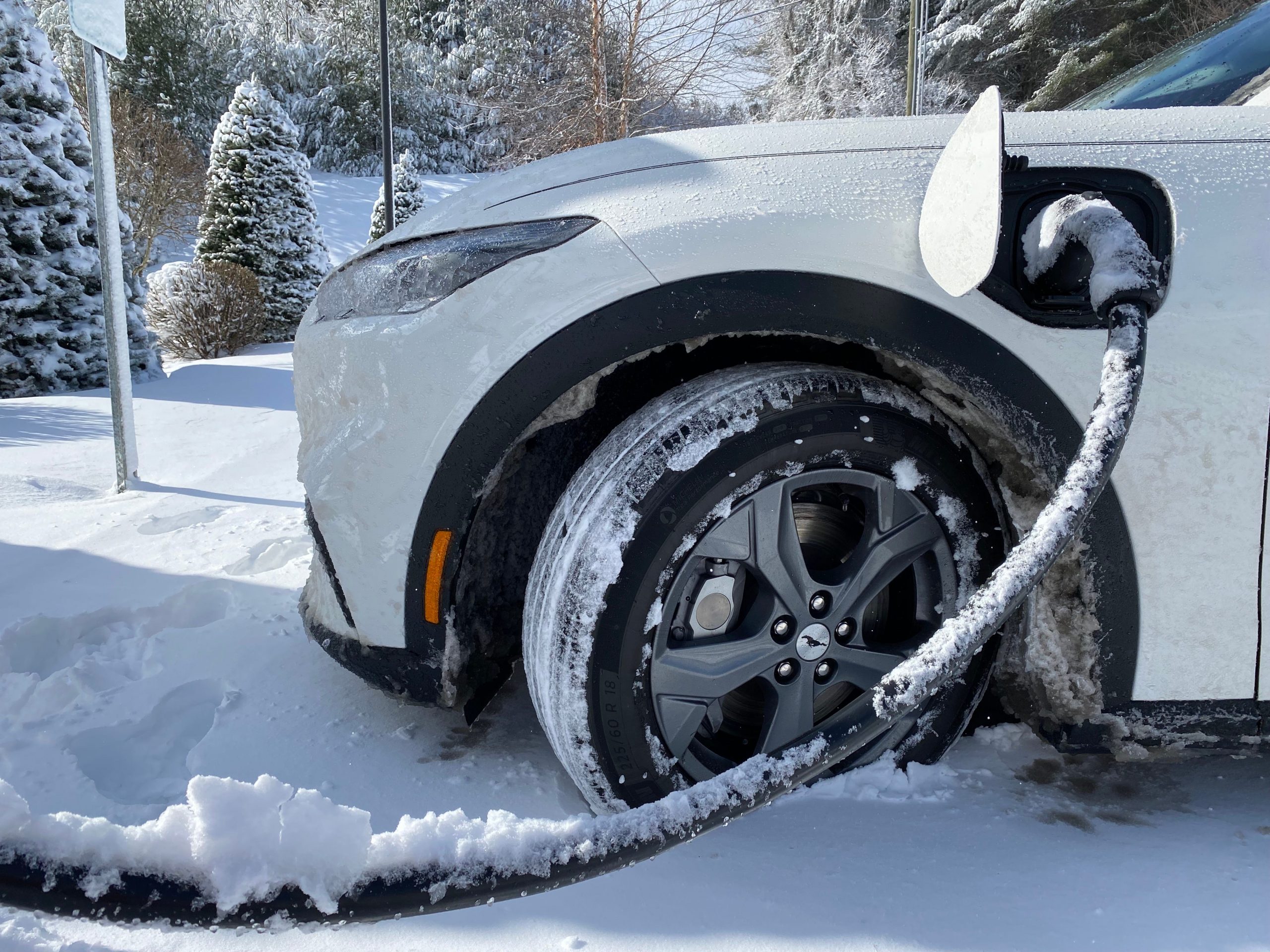
But on my trip, there was an unexpected issue with the Mach-E: ground clearance. In deeper snow, the SUV's relatively low clearance of 5.7 inches made it "plow."
Even worse, the GT variant only has 5.3 inches of ground clearance, making it 0.2 inches lower than a Tesla Model 3 sedan. If you live in a climate where driving through deep snow is a seasonal occurrence, a Volvo XC40 Recharge with 8.3 inches of ground clearance could likely traverse more frozen terrain.
After driving in the snow for an hour or so, it was time to head home. Unlike the drive up, the drive down the mountain is — well — downhill. Since the Mach-E is an EV, that means there would be power gains through regenerative braking.
"Regenerative braking" is a popular term with EVs. Since electric cars can recuperate kinetic energy and transfer it into electrical energy, downhill slopes are perfect opportunities for generating additional range. In the Mach-E, you simply let your foot off the accelerator, and the vehicle slows to a stop. It's not the friction brakes, but the electric motor acting as a generator.
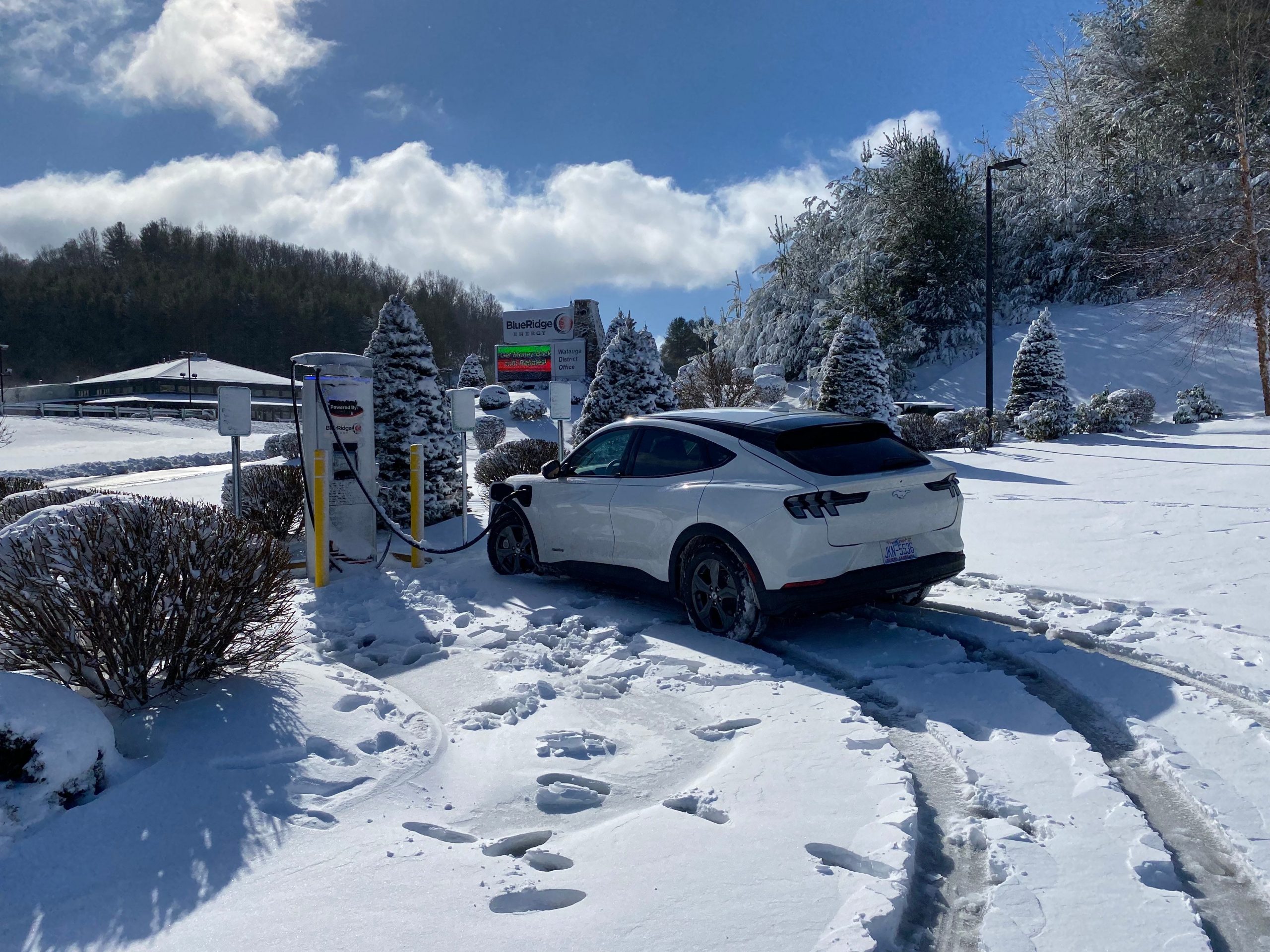
By the time I reached the bottom of the mountain in a roughly 10-mile segment, the car's range estimate had jumped by 6 miles. Essentially, I gained 6 miles of range by driving 10 out of the 90 miles needed to get home. If I drove a car with an internal-combustion engine, I would've lost all that energy as heat through the brakes.
Once I got back home, I recorded an efficiency of 4.1 miles per kWh and used about 24.5 kWh of energy. This figure would translate into 279 miles of range, but obviously, you need to drive up the mountain to gain range by driving down it. So the total trip efficiency was 3.3 miles per kWh, which renders a real-world trip range of 224 miles.
Factoring in the cold conditions, additional friction due to snow, and highway driving, I was surprised that the Mach-E could defeat the EPA's rating in such conditions. I've driven Teslas that could barely achieve 80% of their EPA ranges, even in optimal conditions.
For me, this road trip was a massive win for Ford's EV program. While there's room for improvement with some of the Mach-E's characteristics , there is no doubt that the Mach-E is a more than capable EV to take on a long drive.
